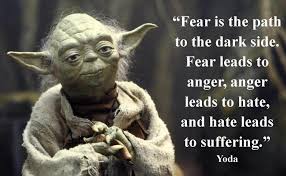*****
Traders barely had time to enjoy the lull from the “Armageddon trade” – the rising possibility of a nuclear exchange between the US and North Korea, which peaked over the weekend when various US officials said a nuclear war is not imminent, echoed by a statement by N. Korea’s state-run news agency KCNA, before a new set of worries promptly took over, chief among them the ongoing slow motion train wreck in Donald Trump’s administration coupled with yesterday’s double terrorist attacks in Spain. Alas, “nuclear war” risk is about to come back with a vengeance because on Monday US and South Korea are scheduled to begin joint military exercises, a massive show of force which every time in the past has infuriated North Korea, sometimes triggering a show of force.
Held every fall in South Korea, the Ulchi-Freedom Guardian war games are the world’s largest computerized command and control exercise. Some 30,000 U.S. soldiers and more than 50,000 South Korean troops usually take part, along with hundreds of thousands of first responders and civilians, some practicing for a potential chemical weapons attack.
Scheduled long before the recent diplomatic fallout between Washington and Pyongyang, the U.S. and South Korean militaries will simulate warfare with North Korea from Aug. 21 to 31, well aware that North Korea could respond with another missile test, according to McClatchy.
In light of this perceived provocation by North Korea, which will almost certainly prompt some reaction, Scott A. Snyder, a Korea specialist with the Council on Foreign Relations said “Over the course of the next two weeks I expect tensions to escalate. This is always a sensitive issue, but it is more hair-trigger as the North Koreans are very sensitive to the likely additional nuclear-capable aircraft flyovers.”
While the Pentagon has repeatedly stated that the biannual exercises are “defensive” in nature, both North Korea and China have long criticized them as a provocation and an affront to regional security. “There certainly will be some reaction,” said J.D. Williams, a retired Marine colonel and defense policy researcher at the RAND Corporation in California. He said he wouldn’t be surprised if North Korea conducted some kind of missile launch — not a test but a defiant demonstration of might.
As discussed earlier in the week, North Korea’s Kim backed off a threat to launch missiles at Guam, saying he’d watch “the foolish and stupid conduct of the Yankees” before deciding on the launch, a decision that Trump quickly tweeted was “very wise and well reasoned.” While the exchange suggested that cooler heads were prevailing in the latest U.S. standoff with North Korea. But next week’s war games could rekindle hostilities. On Thursday, North Korean state media declared that the military exercises will “further drive the situation on the Korean Peninsula into a catastrophe.”
It’s not just North Korea: Beijing will likely be rather unhappy too.
The exercise, along with one in March, often triggers anti-war protests in South Korea and condemnation from China. While Chinese President Xi Jinping has been noticeably cool toward Kim Jong Un, and has been critical of North Korea’s development of nuclear weapons, China has long wanted the United States to shrink its military footprint in Asia, including some 12 bases in South Korea and Japan.
In an editorial Monday, China’s Global Times newspaper, an arm of the Communist Party’s People’s Daily, lambasted the decision by the United States and South Korea to go ahead with Monday’s exercises.
“The drill will definitely provoke Pyongyang more, and Pyongyang is expected to make a more radical response,” the newspaper said. “If South Korea really wants no war on the Korean Peninsula, it should try to stop this military exercise.”
In other words, China – which is largely expected to rein in North Korea – is already hedging in case North Korea does something impulsive, suggesting the exercise itself could be the provocation that sets Kim off. And set him off, it will: in the past North Korea has reacted strongly during the biannual war games. In 2014, the north fired off scud missiles during the March exercises held by the U.S.-South Korean command, called Foul Eagle.
During the 2015 Ulchi-Freedom Guardian exercises, North Korea and South Korea exchanged artillery and rocket fire over their border. That exchange came after two South Korean soldiers were maimed stepping on land mines in the Demilitarized Zone. South Korea accused North Korean soldiers of sneaking across the border and planting the land mines.
Last week, China and Russia urged the United States to consider a “freeze for freeze” agreement to reduce tensions. In such a deal, Pyongyang would agree to suspend its tests of missiles and nuclear weapons, and Washington and Seoul would agree to suspend large-scale military exercises. That, however, is not happening: U.S. military experts say such a deal would give a lopsided advantage to North Korea, which could continue its military training even as the U.S.-South Korea exercises were suspended. “It is hard to imagine why the United States would accept that, because of the vulnerability it would create,” said Bruce Bennett, a senior defense researcher at RAND.
In a media briefing on Tuesday, U.S. State Department spokeswoman Heather Nauert said the United States will continue to hold joint exercises with South Korea. And since North Korea will immediate see this “provocation” as a green light for a response, the respite that traders got from the “Armageddon trade” that sent the VIX soaring by one of its biggest and fastest intraday moves in history, may prove very short-lived. Perhaps the only silver lining is that the exercises don’t begin until Monday, so traders don’t have to do anything too crazy ahead of the weekend.
* * *
PayPal: Donate in USD
PayPal: Donate in EUR
PayPal: Donate in GBP

